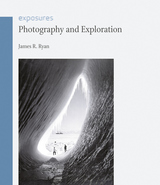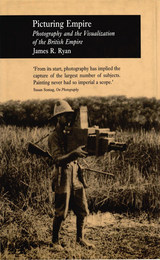3 books about Ryan, James R.

Photography and Exploration
James R. Ryan
Reaktion Books, 2013
When Ferdinand Magellan set out to circumnavigate the globe in 1519, he wasn’t able to bring a digital camera or a smartphone with him. Yet, as the eagerly awaited images from the Mars rover prove, modern exploration is inconceivable without photography. Since its invention in 1839, photography has been integral to exploration, used by explorers, sponsors, and publishers alike, and the early twentieth century, advances in technology—and photography’s newfound cultural currency as a truthful witness to the world—made the camera an indispensable tool. In Photography and Exploration, James R. Ryan uses a variety of examples, from polar journeys to space missions, to show how exploration photographs have been created, circulated, and consumed as objects of both scientific research and art.
Examining a wide range of photographs and expeditions, Ryan considers how nations have often employed images as a means to scientific advancement or territorial conquest. He argues that because exploration has long been bound up with the construction of national and imperial identity, expeditionary photographs have often been used to promote claims to power—especially by the West. These images also challenge the way audiences perceive the world and their place within it. Featuring one hundred images, Photography and Exploration shines new light on how photography has shaped the image of explorers, expeditions, and the worlds they discovered.
[more]

Picturing Empire
Photography and the Visualization of the British Empire
James R. Ryan
Reaktion Books, 1998
Coinciding with the extraordinary expansion of Britain's overseas empire under Queen Victoria, the invention of photography allowed millions to see what they thought were realistic and unbiased pictures of distant peoples and places. This supposed accuracy also helped to legitimate Victorian geography's illuminations of the "darkest" recesses of the globe with the "light" of scientific mapping techniques.
But as James R. Ryan argues in Picturing Empire, Victorian photographs reveal as much about the imaginative landscapes of imperial culture as they do about the "real" subjects captured within their frames. Ryan considers the role of photography in the exploration and domestication of foreign landscapes, in imperial warfare, in the survey and classification of "racial types," in "hunting with the camera," and in teaching imperial geography to British schoolchildren.
Ryan's careful exposure of the reciprocal relation between photographic image and imperial imagination will interest all those concerned with the cultural history of the British Empire.
But as James R. Ryan argues in Picturing Empire, Victorian photographs reveal as much about the imaginative landscapes of imperial culture as they do about the "real" subjects captured within their frames. Ryan considers the role of photography in the exploration and domestication of foreign landscapes, in imperial warfare, in the survey and classification of "racial types," in "hunting with the camera," and in teaching imperial geography to British schoolchildren.
Ryan's careful exposure of the reciprocal relation between photographic image and imperial imagination will interest all those concerned with the cultural history of the British Empire.
[more]

Picturing Empire
Photography and the Visualization of the British Empire
James R. Ryan
University of Chicago Press, 1997
Coinciding with the extraordinary expansion of Britain's overseas empire under Queen Victoria, the invention of photography allowed millions to see what they thought were realistic and unbiased pictures of distant peoples and places. This supposed accuracy also helped to legitimate Victorian geography's illuminations of the "darkest" recesses of the globe with the "light" of scientific mapping techniques.
But as James R. Ryan argues in Picturing Empire, Victorian photographs reveal as much about the imaginative landscapes of imperial culture as they do about the "real" subjects captured within their frames. Ryan considers the role of photography in the exploration and domestication of foreign landscapes, in imperial warfare, in the survey and classification of "racial types," in "hunting with the camera," and in teaching imperial geography to British schoolchildren.
Ryan's careful exposure of the reciprocal relation between photographic image and imperial imagination will interest all those concerned with the cultural history of the British Empire.
But as James R. Ryan argues in Picturing Empire, Victorian photographs reveal as much about the imaginative landscapes of imperial culture as they do about the "real" subjects captured within their frames. Ryan considers the role of photography in the exploration and domestication of foreign landscapes, in imperial warfare, in the survey and classification of "racial types," in "hunting with the camera," and in teaching imperial geography to British schoolchildren.
Ryan's careful exposure of the reciprocal relation between photographic image and imperial imagination will interest all those concerned with the cultural history of the British Empire.
[more]
READERS
Browse our collection.
PUBLISHERS
See BiblioVault's publisher services.
STUDENT SERVICES
Files for college accessibility offices.
UChicago Accessibility Resources
home | accessibility | search | about | contact us
BiblioVault ® 2001 - 2024
The University of Chicago Press









